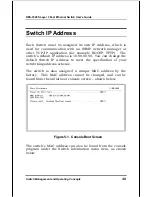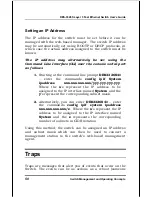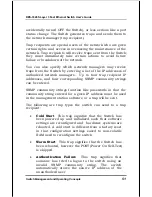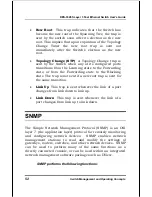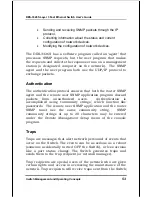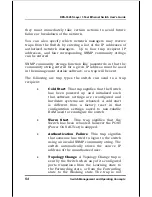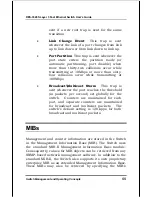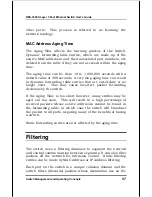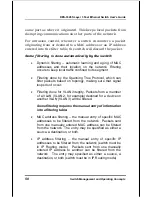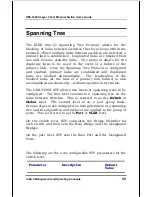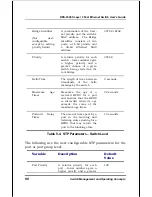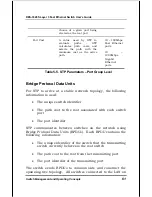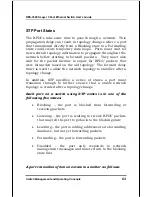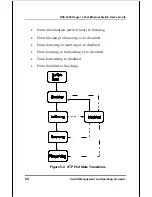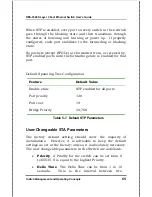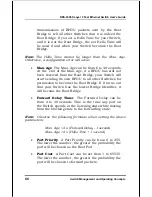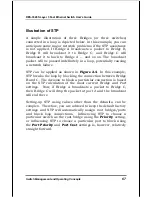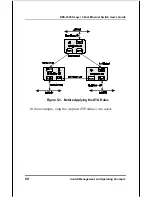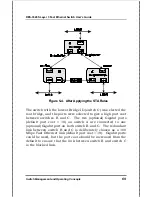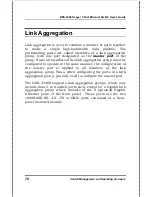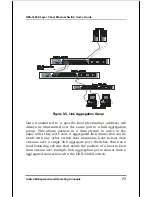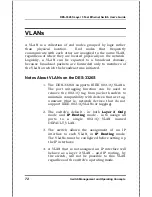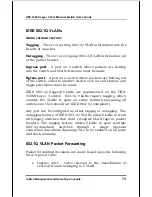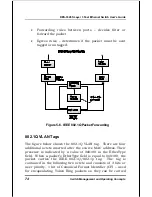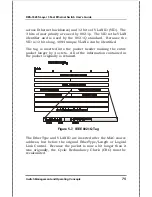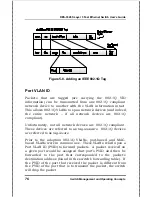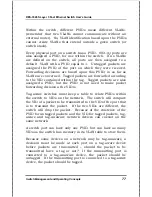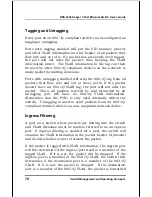
DES-3326S Layer 3 Fast Ethernet Switch User’s Guide
Switch Management and Operating Concepts
63
STP Port States
The BPDUs take some time to pass through a network. This
propagation delay can result in topology changes where a port
that transitioned directly from a Blocking state to a Forwarding
state could create temporary data loops. Ports must wait for
new network topology information to propagate throughout the
network before starting to forward packets. They must also
wait for the packet lifetime to expire for BPDU packets that
were forwarded based on the old topology. The forward delay
timer is used to allow the network topology to stabilize after a
topology change.
In addition, STP specifies a series of states a port must
transition through to further ensure that a stable network
topology is created after a topology change.
Each port on a switch using STP exists is in one of the
following five states:
•
Blocking – the port is blocked from forwarding or
receiving packets
•
Listening – the port is waiting to receive BPDU packets
that may tell the port to go back to the blocking state
•
Learning – the port is adding addresses to its forwarding
database, but not yet forwarding packets
•
Forwarding – the port is forwarding packets
•
Disabled – the port only responds to network
management messages and must return to the blocking
state first
A port transitions from one state to another as follows:

